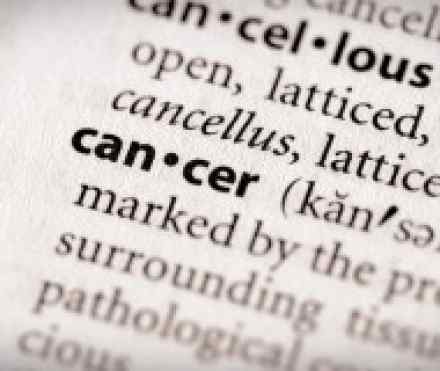
What is it?
- Bone cancer is an uncommon cancer that begins in a bone. Bone cancer can begin in any bone in the body, but it most commonly affects the long bones that make up the arms and legs.
- Several types of bone cancer exist. Some types of bone cancer occur primarily in children, while others affect mostly adults.
- The term "bone cancer" doesn't include cancers that begin elsewhere in the body and spread (metastasize) to the bone. Instead, those cancers are named for where they began, such as breast cancer that has metastasized to the bone. Bone cancer also doesn't include blood cell cancers, such as multiple myeloma and leukemia, that begin in the bone marrow — the jelly-like material inside the bone where blood cells are made.
Symptoms
Signs and symptoms of bone cancer include:
- Bone pain
- Swelling and tenderness near the affected area
- Weakened bones, sometimes leading to fractures
- Fatigue
- Unintended weight loss
Causes
It's not clear what causes most bone cancers. Doctors know bone cancer begins as an error in a cell's DNA. The error tells the cell to grow and divide in an uncontrolled way. These cells go on living, rather than dying at a set time. The accumulating mutated cells form a mass (tumor) that can invade nearby structures or spread to other areas of the body.
Types of bone cancer
Bone cancers are broken down into separate types based on the type of cell where the cancer began. Bone cancer types include:
- Osteosarcoma. Osteosarcoma begins in the bone cells. Osteosarcoma occurs most often in children and young adults.
- Chondrosarcoma. Chondrosarcoma begins in cartilage cells that are commonly found on the ends of bones. Chondrosarcoma most commonly affects older adults.
- Ewing's sarcoma. It's not clear where in bone Ewing's sarcoma begins. Scientists believe Ewing's sarcoma may begin in nerve tissue within the bone. Ewing's sarcoma occurs most often in children and young adults.
Risk factors
Most bone cancers occur in people who have identifiable risk factors. It's not known what causes bone cancer, but factors that increase the risk of bone cancer include:
- Inherited genetic syndromes. Certain rare genetic syndromes passed through families increase the risk of bone cancer, including Li-Fraumeni syndrome, Rothmund-Thomson syndrome, hereditary retinoblastoma and multiple exostoses.
- Paget's disease of bone. This precancerous condition that affects older adults increases the risk of bone cancer.
- Radiation therapy for cancer. Exposure to large doses of radiation, such as those given during radiation therapy for cancer, increases the risk of bone cancer in the future.
Diagnosis
Imaging tests
What imaging tests you undergo depends on your situation. Your doctor may recommend one or more imaging tests to evaluate the area of concern, including:
- Bone scan
- Computerized tomography (CT)
- Magnetic resonance imaging (MRI)
- Positron emission tomography (PET)
- X-ray
Removing a sample of tissue for laboratory testing
Your doctor may recommend a procedure to remove (biopsy) a sample of tissue from the tumor for laboratory testing. Testing can tell your doctor whether the tissue is cancerous and, if so, what type of cancer you have. Testing may also reveal the cancer's grade, which helps doctors understand how aggressive the cancer may be.
Types of biopsy procedures used to diagnose bone cancer include:
- Inserting a needle through your skin and into a tumor. During a needle biopsy, your doctor inserts a thin needle through your skin and guides it into the tumor. The needle is used to remove small pieces of tissue from the tumor.
- Surgery to remove a tissue sample for testing. During a surgical biopsy, your doctor makes an incision through your skin and removes either the entire tumor (excisional biopsy) or a portion of the tumor (incisional biopsy).
Determining the type of biopsy you need and the particulars of how it should be performed requires careful planning by your medical team. Doctors need to perform the biopsy in a way that won't interfere with future surgery to remove bone cancer. For this reason, ask your doctor for a referral to an appropriate surgeon before your biopsy.
Tests to determine the extent (stage) of the bone cancer
Once your doctor diagnoses your bone cancer, he or she works to determine the extent (stage) of your cancer. The cancer's stage guides your treatment options.
Stages of bone cancer include:
- Stage I. At this stage, bone cancer is limited to the bone and hasn't spread to other areas of the body. After biopsy testing, cancer at this stage is considered low grade and is not considered aggressive.
- Stage II. This stage of bone cancer is limited to the bone and hasn't spread to other areas of the body. But biopsy testing reveals the bone cancer is high grade and is considered aggressive.
- Stage III. At this stage, bone cancer occurs in two or more places on the same bone.
- Stage IV. This stage of bone cancer indicates that cancer has spread beyond the bone to other areas of the body, such as the brain, liver or lungs.
Treatments and drugs
The treatment options for your bone cancer are based on the type of cancer you have, the stage of the cancer, your overall health and your preferences. Bone cancer treatment typically involves surgery, chemotherapy, radiation or a combination of treatments.
Surgery
The goal of surgery is to remove the entire bone cancer. To accomplish this, doctors remove the tumor and a small portion of healthy tissue that surrounds it. Types of surgery used to treat bone cancer include:
- Surgery to remove a limb. Bone cancers that are large or located in a complicated point on the bone may require surgery to remove all or part of a limb (amputation). As other treatments have been developed, this procedure is becoming less common. You'll likely be fitted with an artificial limb after surgery and will go through training to learn to do everyday tasks using your new limb.
- Surgery to remove the cancer, but spare the limb. If a bone cancer can be separated from nerves and other tissue, the surgeon may be able to remove the bone cancer and spare the limb. Since some of the bone is removed with the cancer, the surgeon replaces the lost bone with some bone from another area of your body or with a special metal prosthesis. Intense rehabilitative therapy may be necessary after limb-sparing surgery in order for the affected arm or leg to become fully functional.
- Surgery for cancer that doesn't affect the limbs. If bone cancer occurs in bones other than those of the arms and legs, surgeons may remove the bone and some surrounding tissue, such as in cancer that affects a rib, or may remove the cancer while preserving as much of the bone as possible, such as in cancer that affects the spine. Bone removed during surgery can be replaced with a piece of bone from another area of the body or with a special metal prosthesis.
Radiation therapy
- Radiation therapy uses high-powered beams of energy, such as X-rays, to kill cancer cells. During radiation therapy, you lie on a table while a special machine moves around you and aims the energy beams at precise points on your body.
- Radiation therapy may be used to shrink a bone cancer to increase the likelihood that a surgeon can remove the entire cancer with surgery. In this situation, radiation therapy may be combined with chemotherapy.
- Radiation therapy may also be used in people with bone cancer that can't be removed with surgery. Radiation therapy may also be used after surgery to kill any cancer cells that may be left behind. For people with advanced bone cancer, radiation therapy may help control signs and symptoms, such as pain.
Chemotherapy
- Chemotherapy is a drug treatment that uses chemicals to kill cancer cells. Chemotherapy is most often given through a vein (intravenously). The chemotherapy medications travel throughout your body.
- Chemotherapy is often used before surgery, usually in combination with radiation therapy, to shrink a bone cancer to a more manageable size that allows the surgeon to use a limb-sparing surgery. Chemotherapy may also be used in people with bone cancer that has spread beyond the bone to other areas of the body.
Coping and support
A diagnosis of cancer, whether yours or your child's, presents big challenges. Remember that no matter what your concerns or the prognosis, there are resources and strategies that may make dealing with cancer easier. Here are some suggestions for coping:
- Learn enough to make decisions about your treatment. Find out more about bone cancer so that you can feel more comfortable as you make decisions about your treatment. Ask your doctor to write down the type and stage of your cancer, as well as the names of the treatments being recommended.
- Connect with other people in your same situation. The concern and understanding of a formal support group or of others coping with their own cancer or that of their child can be helpful. Support groups can be good sources for practical information. You may also develop deep and lasting bonds with people who are going through the same things you are.
- Take time for yourself. Eating well, relaxing and getting enough rest can help combat the stress and fatigue of cancer. Also, plan ahead for the times when you may need to rest more or limit what you do. If your child has cancer, one of the most important things you can do is take care of yourself. As a caregiver, you need to have the strength and emotional reserves to meet your child's needs.
- Stay active. Having cancer doesn't mean you have to stop doing the things you enjoy or normally do. For the most part, if you feel well enough to do something, go ahead and do it. It's important to stay involved as much as you can. If your child has cancer, try to keep his or her life as normal as possible.
- Look for a connection to something beyond yourself. Having a strong faith or a sense of something greater than yourself may help you successfully cope with cancer.
References:
https://en.wikipedia.org/wiki/Bone_tumor
http://www.cancer.ie/cancer-information/bone-cancer#sthash.DtmzHHx9.dpbs
http://www.cancer.net/cancer-types/bone-cancer/symptoms-and-signs
http://www.ncri.ie/sites/ncri/files/pubs/Bones.pdf
http://www.cancerresearchuk.org/about-cancer/type/bone-cancer/
http://www.hse.ie/eng/health/az/B/Bone-cancer-sarcoma-/Treatment-for-bone-cancer.html




